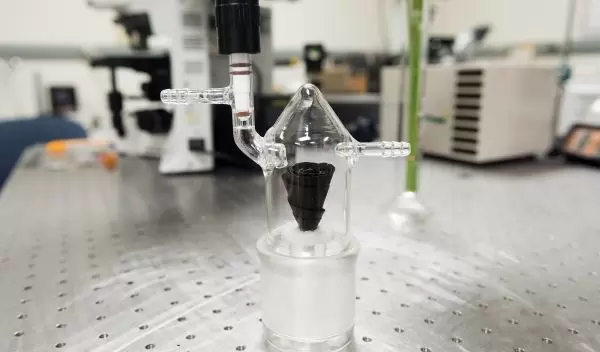
Origami rose inspires a new way to collect and purify water
The rose is one of the most iconic plants in popular culture, but now the flower could hold more than symbolic value. A new device for collecting and purifying water, developed at The University of Texas at Austin, was inspired by a rose and, while more engineered than grown, is a dramatic improvement over current methods, researchers say.
Each flowerlike structure costs less than two cents and can produce more than a half-gallon of water per hour per square meter.
A team led by Donglei (Emma) Fan developed a new approach to solar steaming for water production -- a technique that uses energy from sunlight to separate salt and other impurities from water through evaporation.
In a paper published in the journal Advanced Materials, the authors outline how an origami rose provided inspiration for developing a new kind of solar-steaming system made from layered, black paper sheets shaped into petals. Attached to a stem-like tube that collects untreated water from any water source, the 3D rose shape makes it easier for the structure to collect and retain liquid.
Current solar-steaming technologies are usually expensive, bulky and limited in the results they produce. The team's method uses inexpensive materials that are portable and lightweight.
"Materials engineering, processing, and manufacturing research is yielding many new methods to create high-performance and cost-effective materials," says Alexis Lewis, a program director in NSF's Division of Civil, Mechanical and Manufacturing Innovation, which partially funded the research. "NSF's investment in fundamental materials processing research has broad impacts on clean water, sustainable energy and many other national needs."
